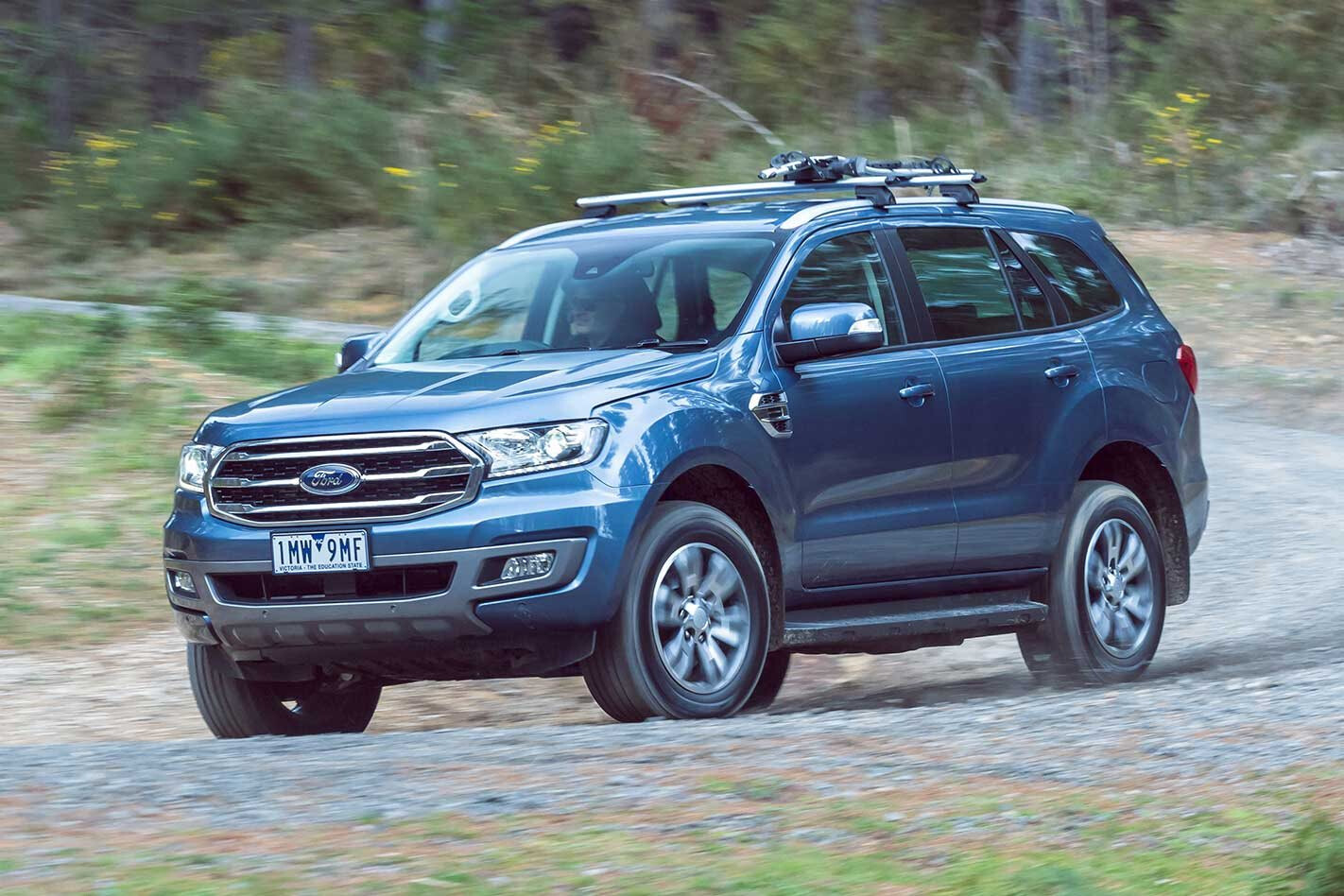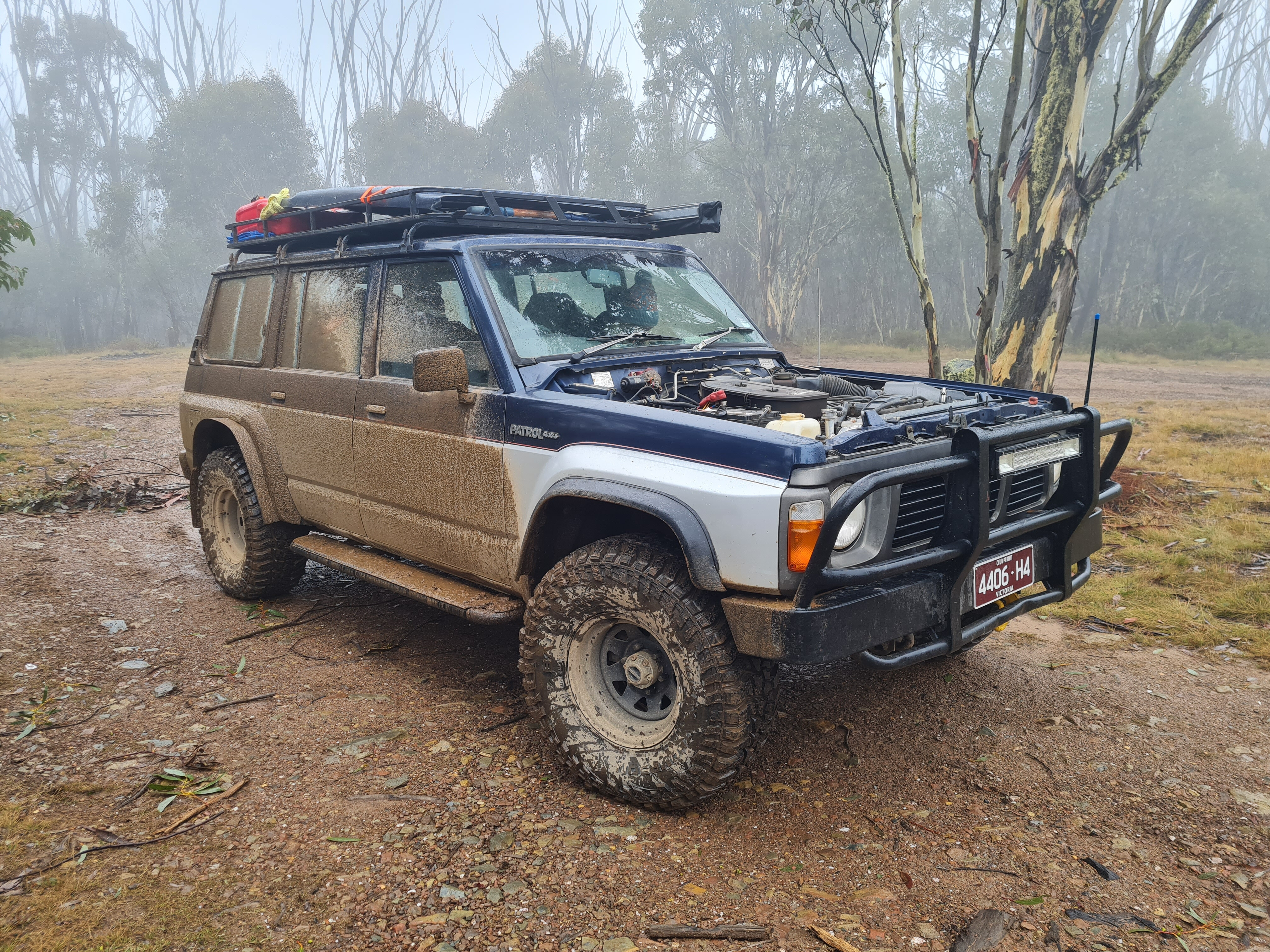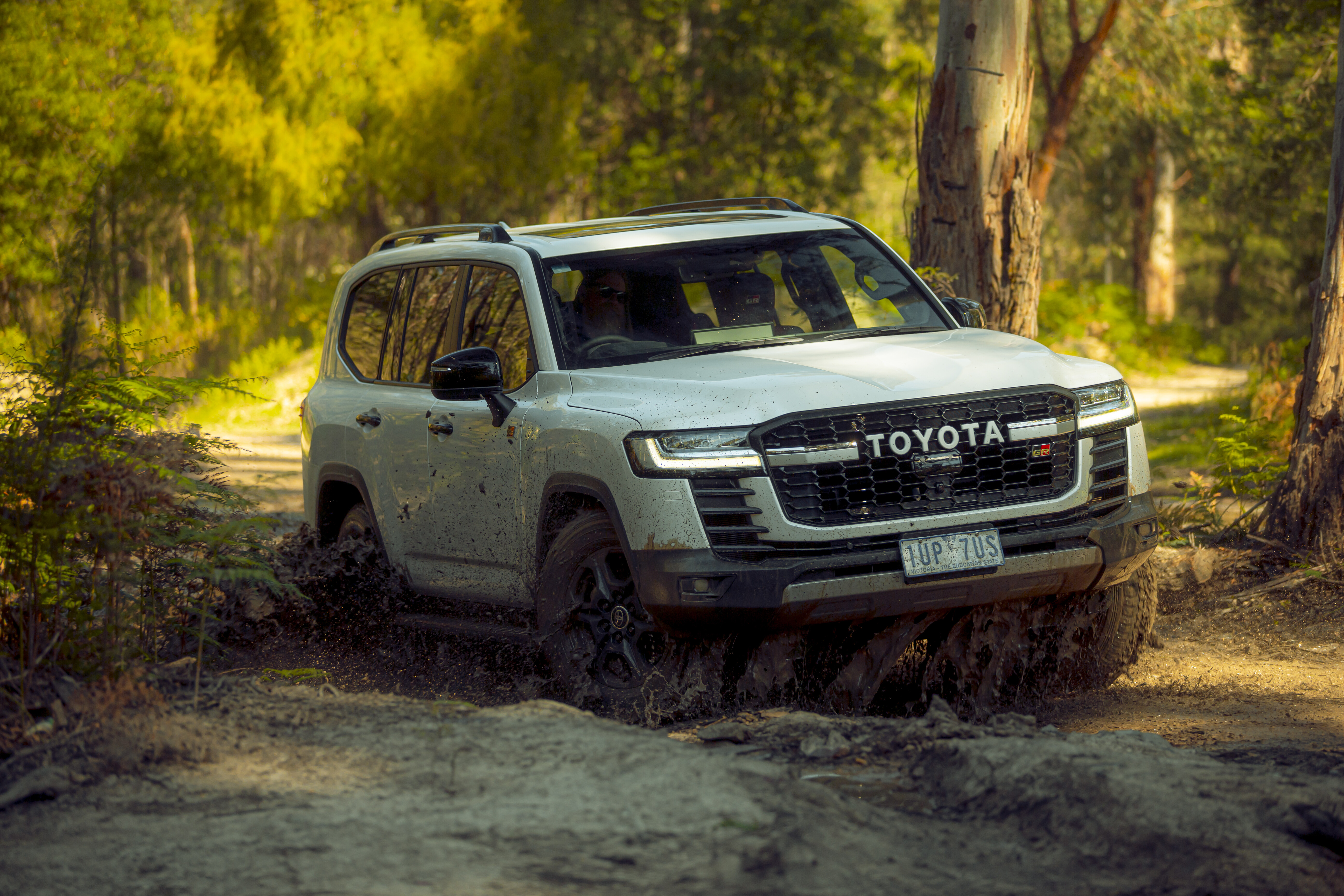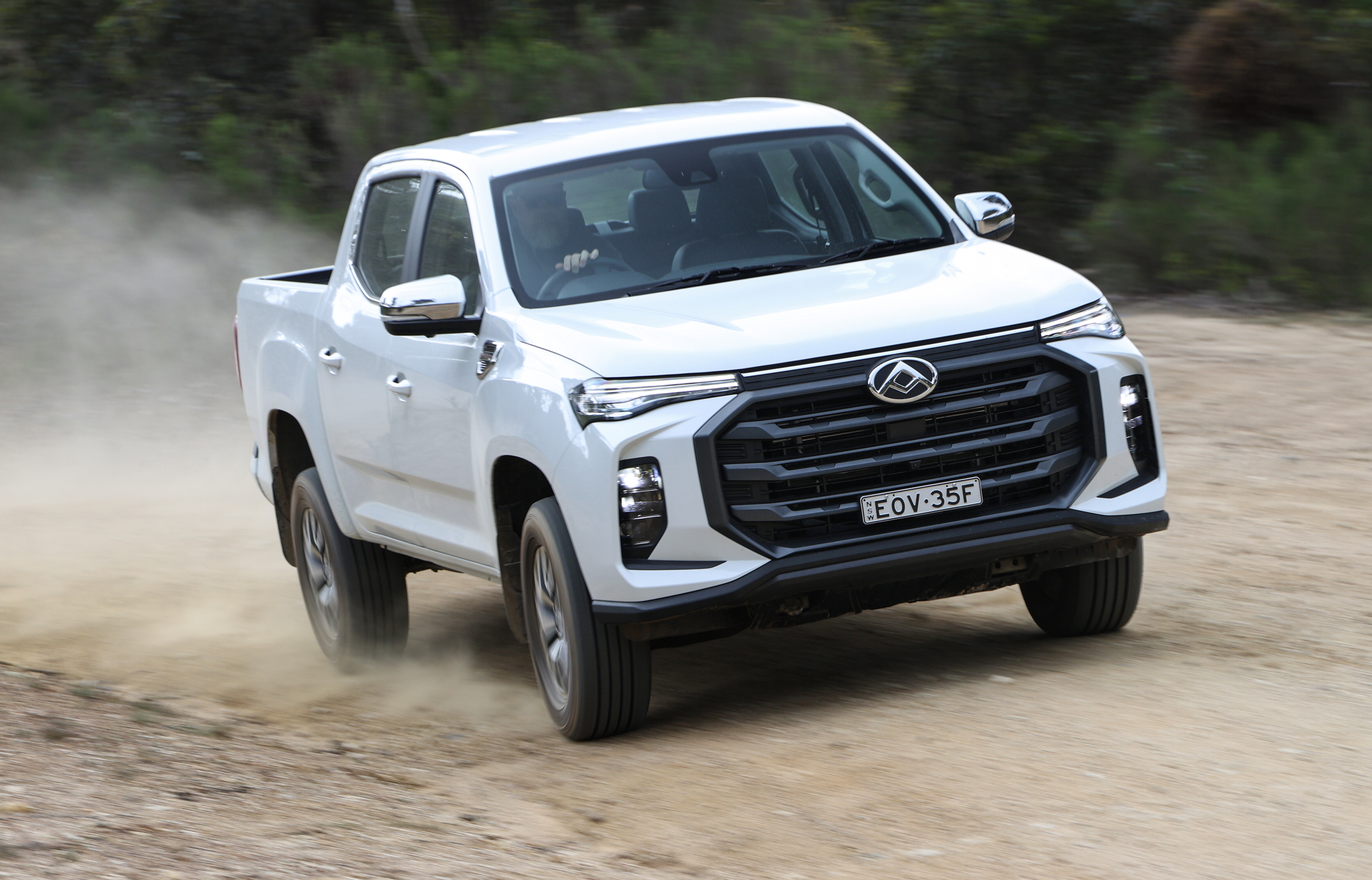THREE years after hitting our roads, Ford has given its Ranger ute-derived Everest wagon its first major update. The key changes centre on the inclusion of a second engine and transmission option, as well as the introduction of new safety technology and a minor facelift.
The new powertrain is the 2.0-litre bi-turbocharged four-cylinder diesel mill backed by a 10-speed automatic transmission, as seen in the recently launched off-road-focused Ranger Raptor ute. In the more family-focused Everest, the engine makes the same 500Nm and 157kW that it does in the Raptor. We will also see this combination come to the regular Ranger ute in October.

Significantly, the smaller capacity engine brings improved fuel consumption to the heavy Everest wagon, an area where the Ford has been criticised in the past.
In the 2400kg Everest Trend 4×4, the bi-turbo scores a 7.1L/100km figure on the ADR combined scale while the same car with the older engine and transmission manages 8.5L/100km. The smaller and torquier bi-turbo-driven Everest also ups towing capacity from 3000kg to 3100kg (braked).
It’s difficult to pick which of the two powertrain combinations would be the quickest as neither of them grace the Everest with anything resembling sports wagon-like performance. When we lined the Ranger Raptor up with a 3.2-litre-powered Ranger Wildtrak, the 2.0-litre engine propelled the heavier Raptor half a second quicker to 100km/h. We’d expect similar zero to 100km/h times between the two engines in Everest. The bi-turbo-powered car is 20kg lighter than the 3.2 version.
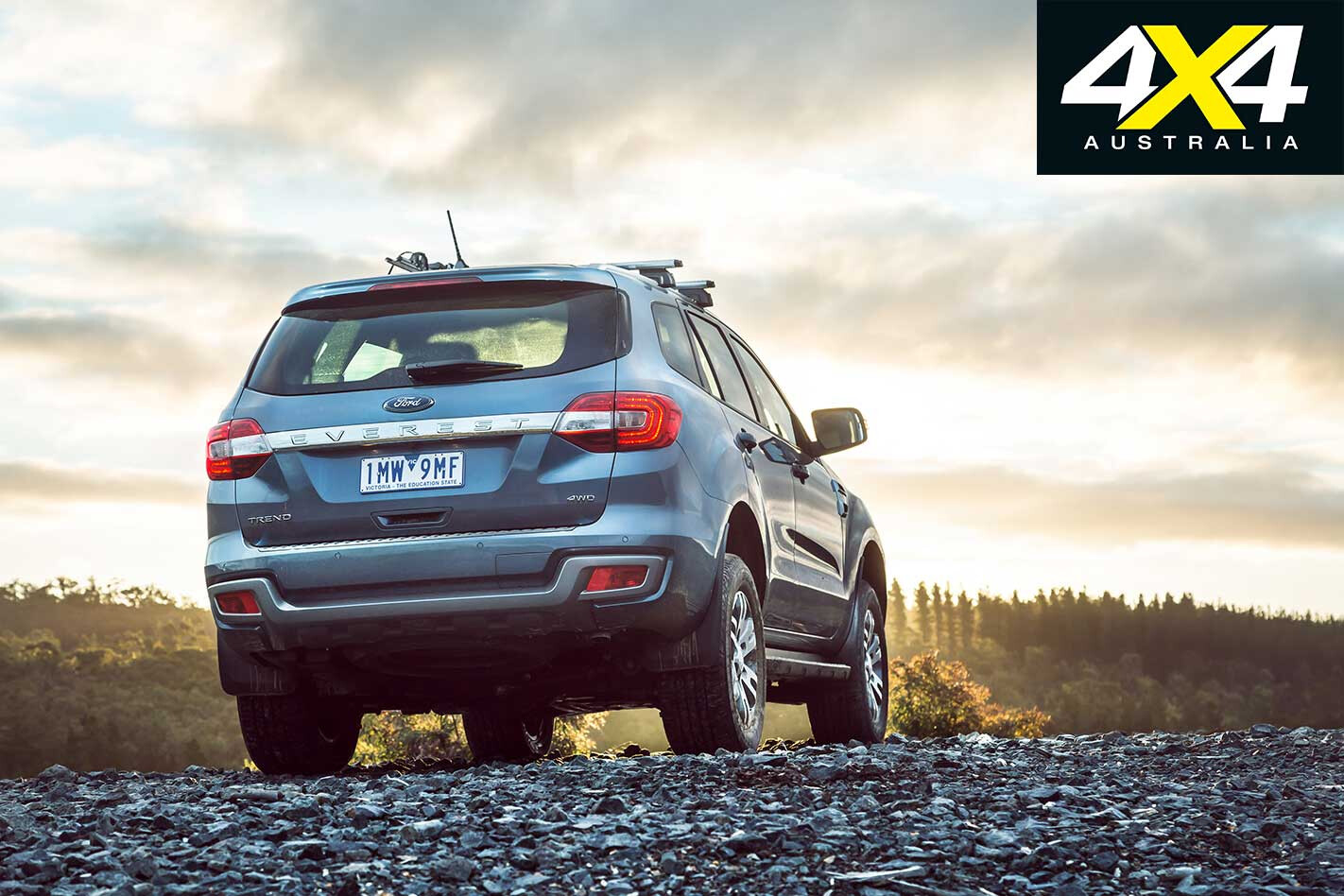
Seat-of-the-pants from inside the Everest, you can’t feel any significant difference in performance. The new powertrain is more refined and the transmission is silky smooth with near-undetectable shifts under moderate throttle input, and it’s quieter than the 3.2 but not by a large margin. In the Everest, this is cloaked by the active noise cancellation the wagon has always enjoyed.
Many have said they don’t like the way the five-cylinder 3.2-litre engine growls when you put your foot down, but I prefer it to the busy rattle of the four-cylinder under load. The four is quieter on light throttle and perhaps a bit at idle, but it isn’t all that much better than the five-pot. I also prefer the lazy, loping characteristics of the 3.2-litre. The bi-turbo four is typically busier and uses those 10 ratios more to keep it on the boil.

It’s a good thing Ford has given Everest – and soon Ranger – buyers the choice of powertrains, as it is a horses for courses decision and will come down to personal preference as to which one is right for you.
If fuel economy is a concern, then the bi-turbo is for you; it’s smooth, powerful and efficient, and it gives you that extra 100kg of towing capacity. However, if you prefer the relaxed nature of the relatively big 3.2, then there’s no real loss in sticking with it.
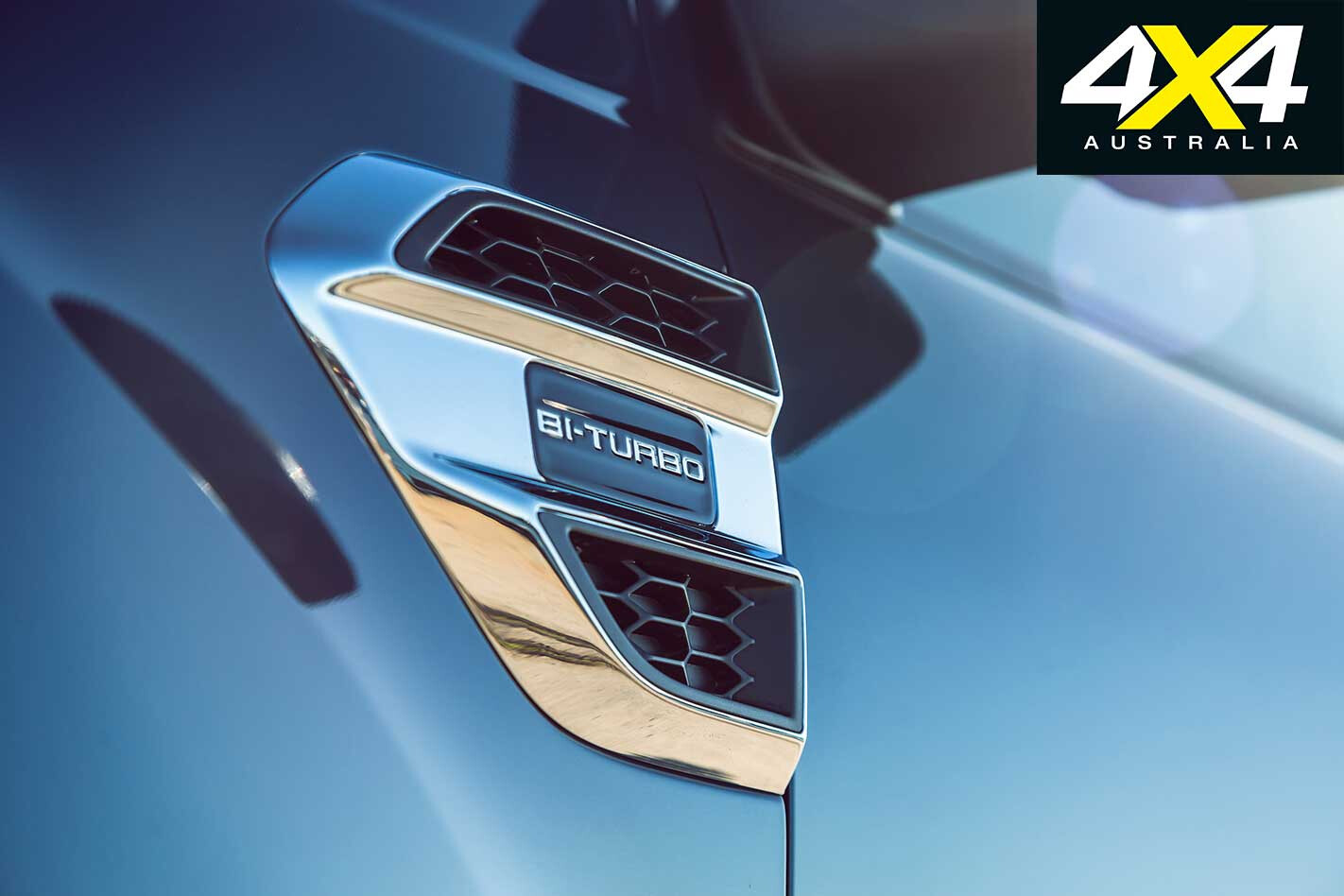
In a market where engines are getting smaller in capacity, Ford and Mazda have enjoyed an edge over their (mainly) sub-three-litre four-cylinder competitors with the grunty 3.2-litre donk. And, even though the bi-turbo 2.0 represents the latest in tech and efficiency, many buyers still go by the ‘there’s no substitute for cubic inches’ adage.
Both engines meet EU5 emissions standards and can be upgraded to EU6 when that eventually comes in to effect, but the longevity of the 3.2L will come down to buyer preferences over the coming years.
BUILDING ON A WINNER
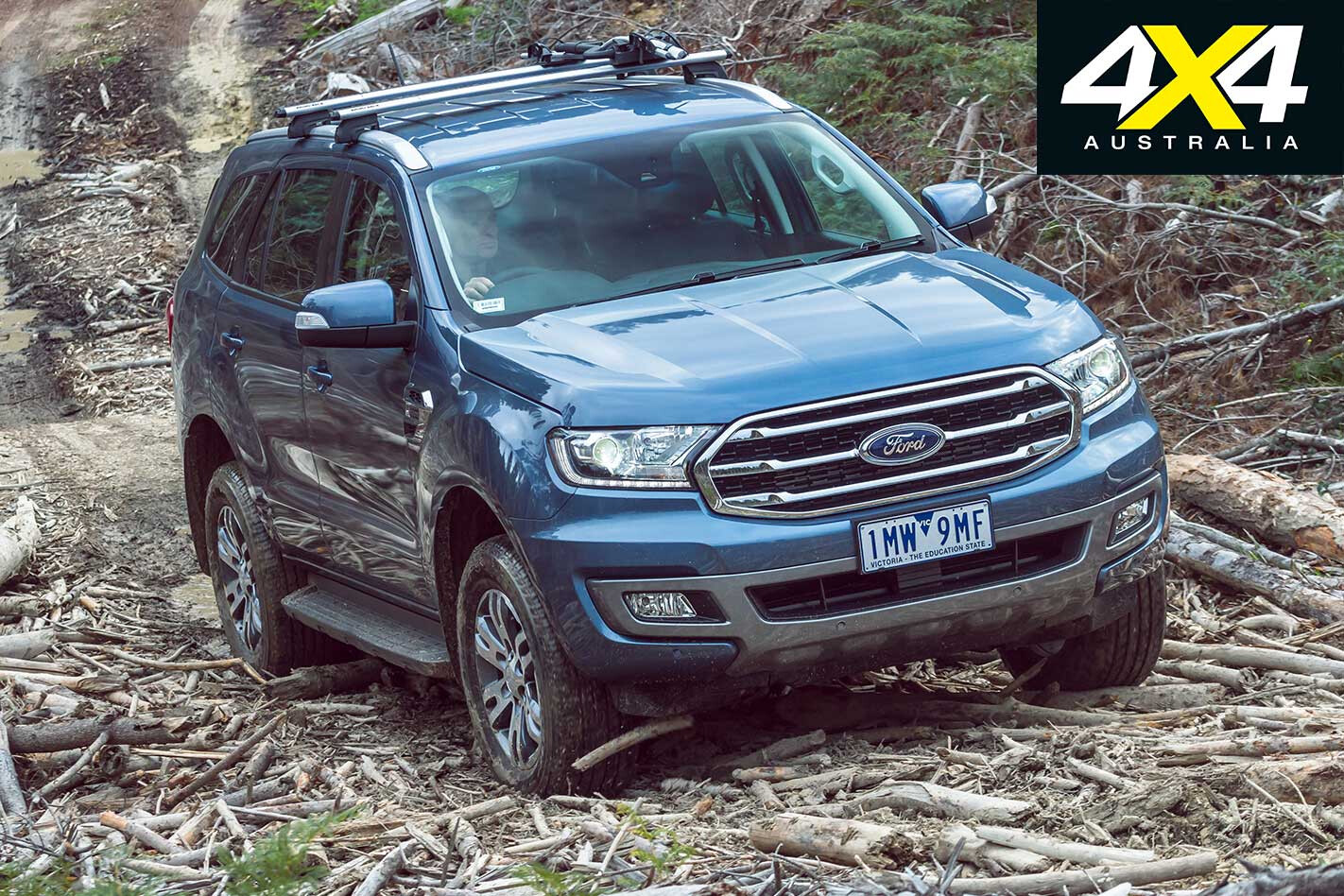
THE FORD Everest was our 4X4 of the Year in 2016 and, aside from the new powertrain option, changes are minimal. The vehicle remains a five-door wagon riding on a ladder frame with a coil-sprung multi-link rear end, IFS and an on-demand 4×4 with low-range transfer case.
One of its strengths was always its on-road and gravel-road dynamics, as it handles better than most of its competitors – namely the Toyota Prado, which is soft and doughy. That handling came at a price, as some testers at the time said the ride quality was too stiff and not as comfortable as it could be.
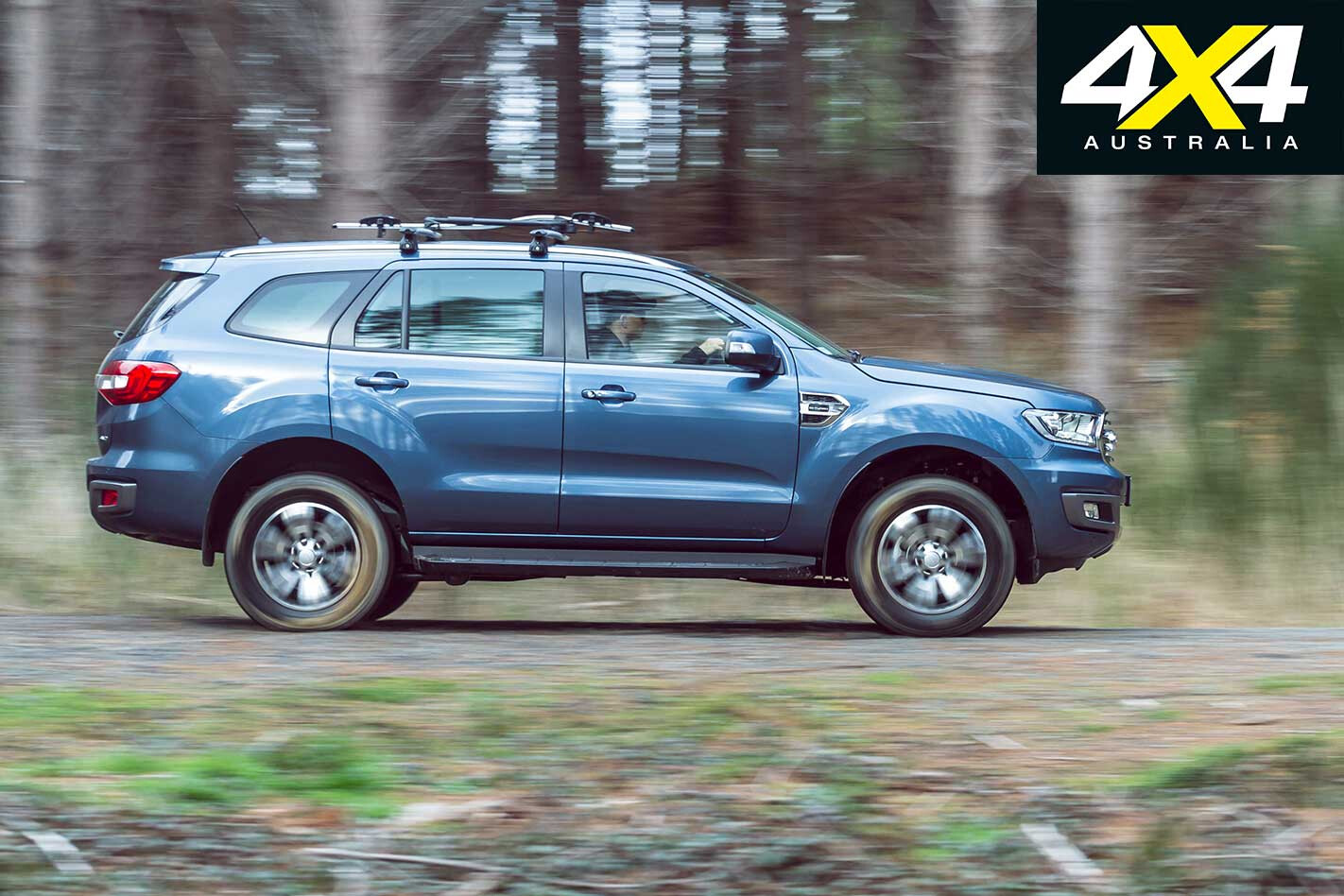
Ford addressed this with changes to the front suspension, where the front anti-sway bar was relocated from ahead of the axle line to behind it. This allowed the fitment of a thicker, stiffer bar to maintain minimal bodyroll, while Ford also reduced the spring rate of the coils to improve the ride. The changes worked, as the Everest maintains its relatively strong handling characteristics with smooth ride and comfort.
The suspension changes don’t affect the live rear axle which still offers a decent amount of wheel travel to keep tyres on the ground when off-road. Its off-road ability isn’t compromised at all, as the well-calibrated electronic traction control works very well and remains active when the standard rear diff lock is in use.
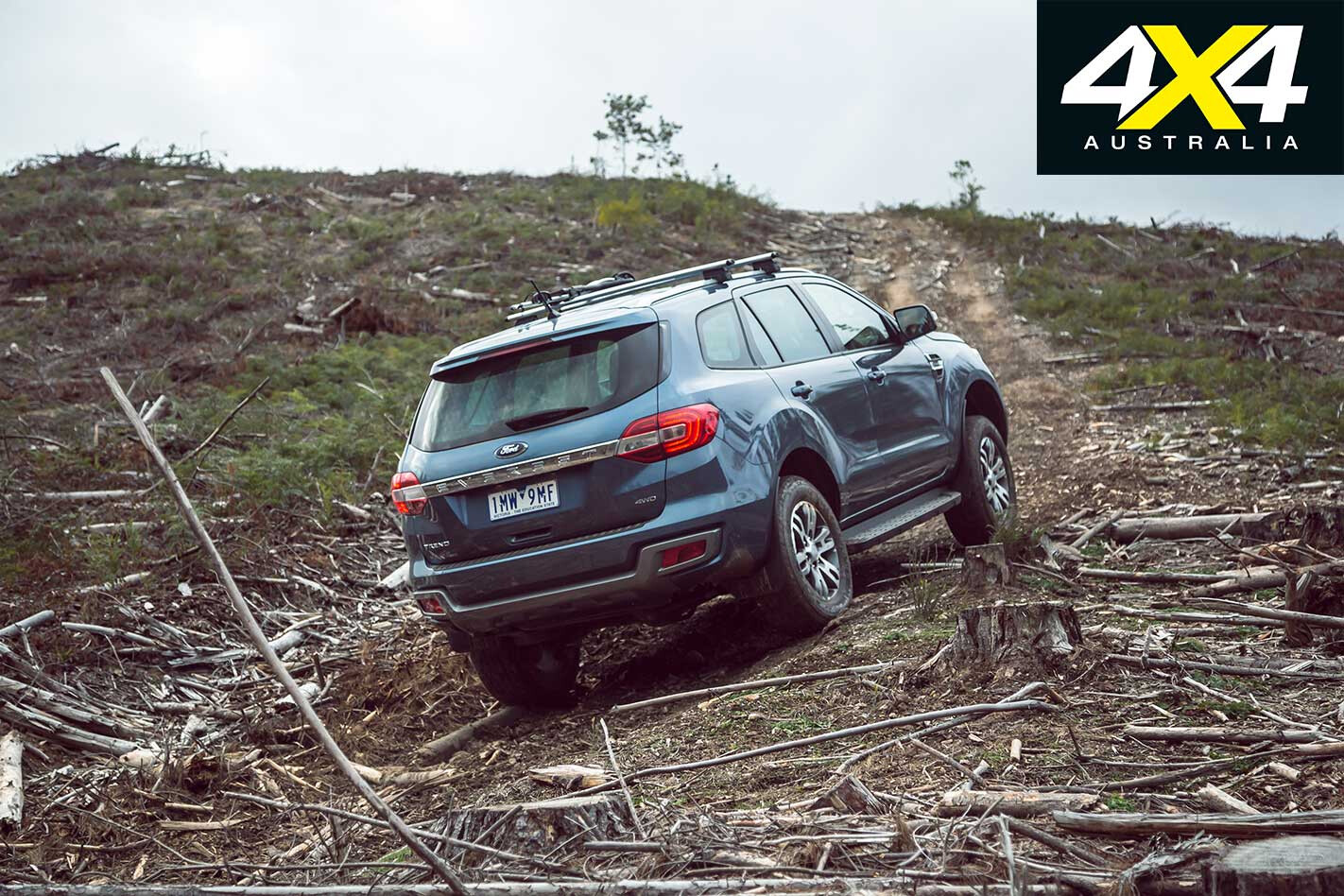
Multi Terrain Selector also remains standard and controls the amount to drive distributed between the front and rear axles, depending on the mode selected as well as other electronic chassis settings. Ford quotes the Everest’s wading depth at a deep 800mm.
Externally the 2019 Everest is differentiated by a new grille and front bumper, with reworked trim on the tailgate which is different depending on the model grade. The first thing drivers will notice on the inside is the keyless entry and start button, while darker trims prevail.
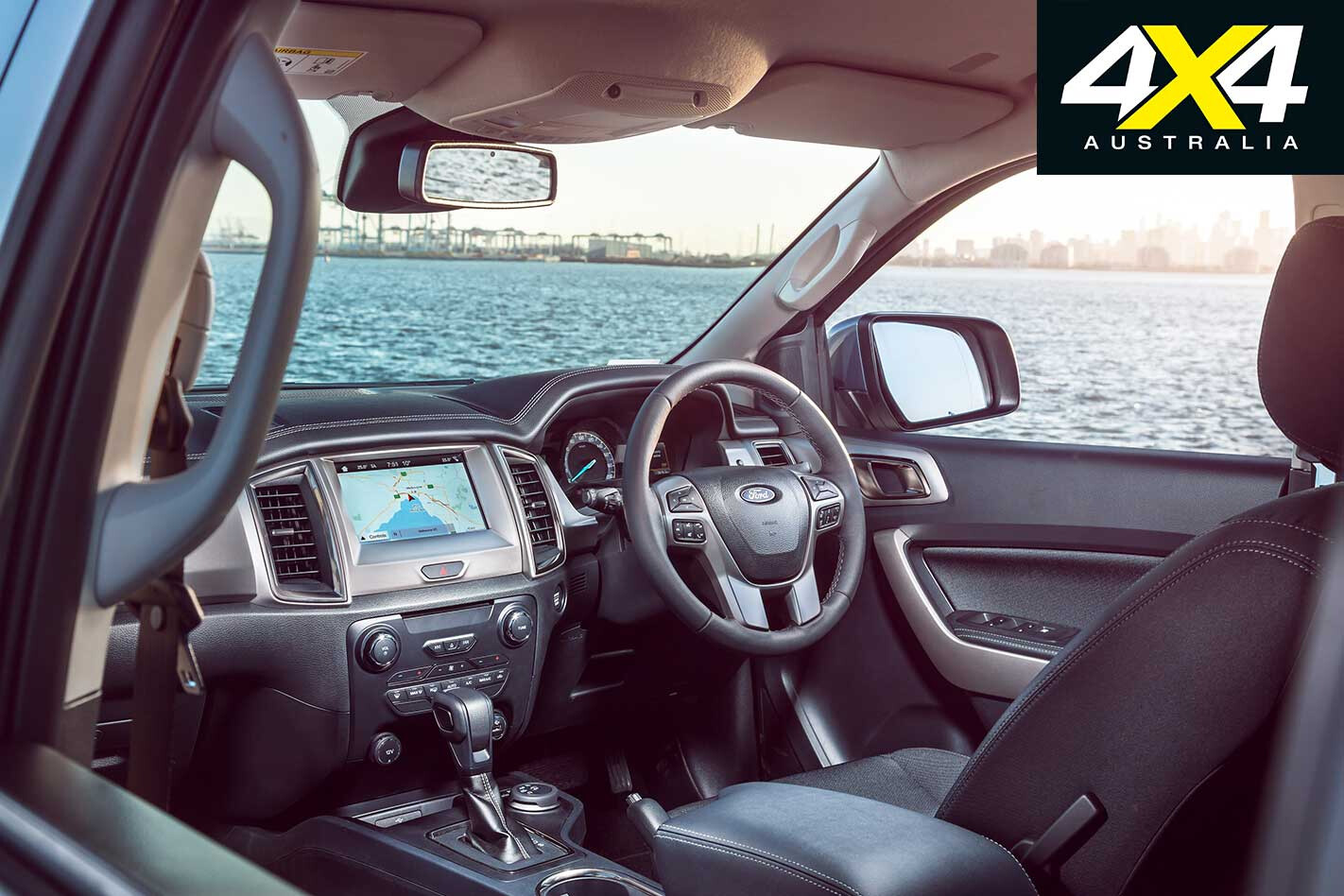
Buyers of the Everest Trend will appreciate the standard inclusion of leather seats, with power adjustment of the driver’s pew. A couple of past criticisms remain inside including the lack of reach adjustment on the steering column and the visibility and functionality of the HVAC controls, which are in a dark hole down low in the centre stack.
Ford has added to the Everest’s already impressive suite of safety technologies with Autonomous Emergency Braking (AEB), which can bring the vehicle to a complete stop if an imminent end-to-end collision is detected. This is standard on both Trend and Titanium models but not available on Ambiente, not even as an option.
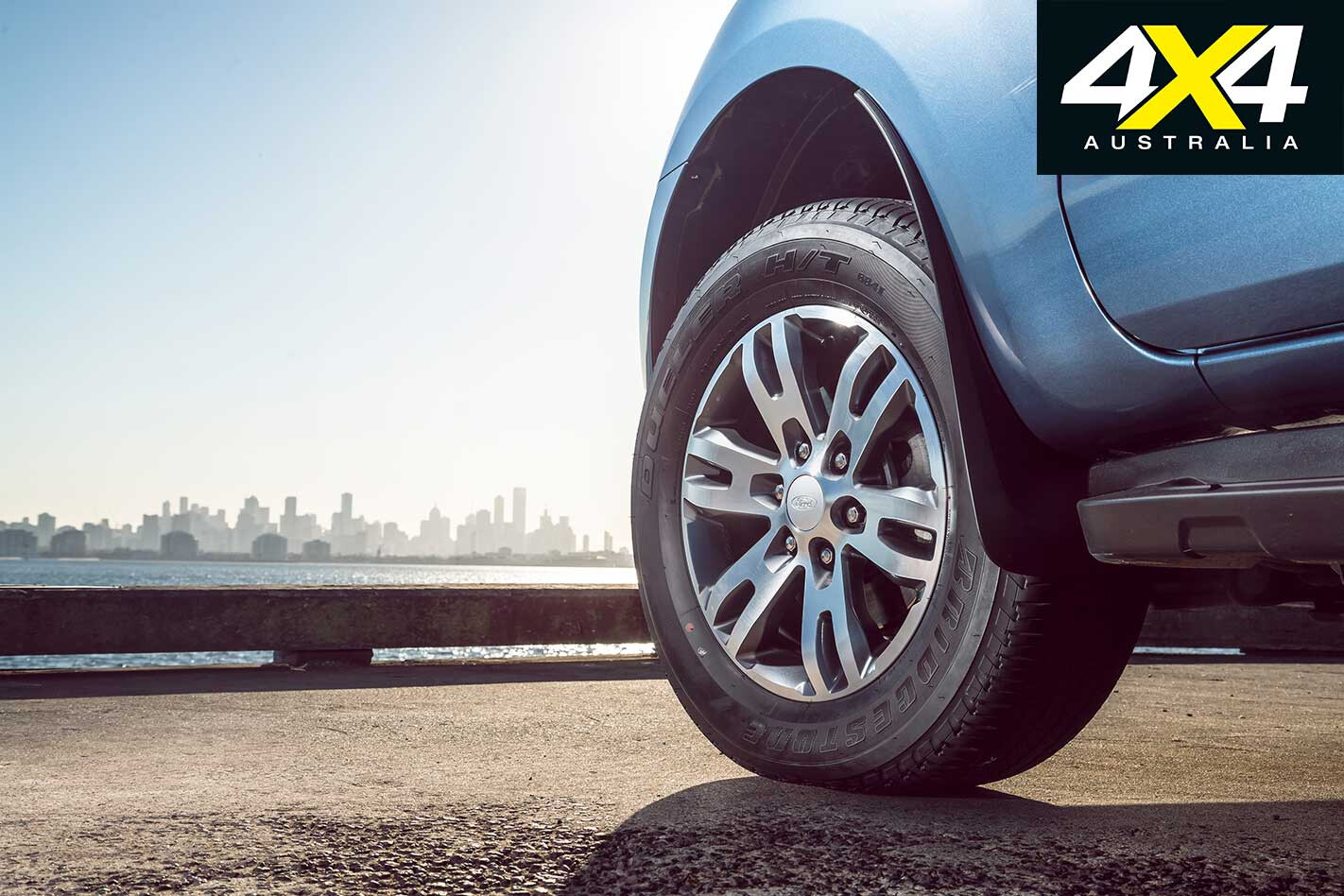
An option buyers of the Everest Titanium who like to use gravel roads will appreciate is the ability to replace the standard 20-inch wheels with 18s, unlocking more tyre options for added durability and improved ride quality on rough tracks and roads. This no-cost option includes changes to suspension components to suit the smaller diameter wheels (as used on the Everest Trend) and is not simply a different set of rims and rubber.
The Everest range continues to be offered with three grades – Ambiente, Trend and Titanium – a choice of two-wheel drive and 4×4, and five- and seven-seat options. Pricing starts at less than $50K for the five-seat RWD Ambiente with the 3.2L engine, and goes up to $73,990 for the top-of-the range bi-turbo-powered Everest Titanium. All Ford Australia vehicles now enjoy a five-year, unlimited-kilometre warranty.
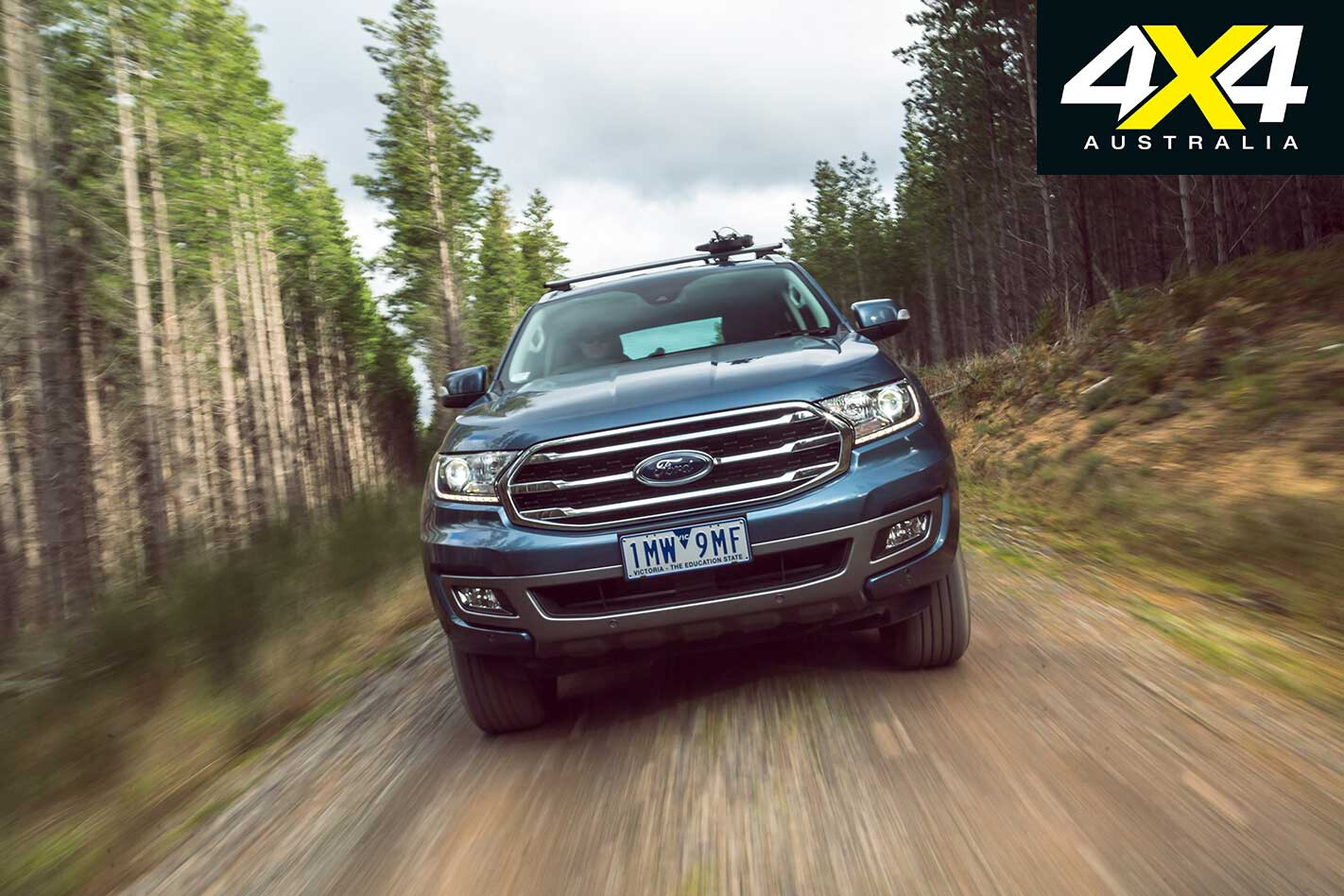
2019 FORD EVEREST RANGE AND PRICES
| Grade | Drive | Engine | Transmission | Seating | Price |
| Ambiente | RWD | 3.2L | 6AT | Five | $49,190 |
| Ambiente | RWD | 3.2L | 6AT | Seven | $50,190 |
| Ambiente | 4WD | 3.2L | 6AT | Five | $54,190 |
| Ambiente | 4WD | 3.2L | 6AT | Seven | $55,190 |
| Trend | RWD | 2L Bi-Turbo | 10AT | Seven | $56,190 |
| Trend | 4WD | 3.2L | 6AT | Seven | $59,990 |
| Trend | 4WD | 2L Bi-Turbo | 10AT | Seven | $61,190 |
| Titanium | 4WD | 2L Bi-Turbo | 10AT | Seven | $73,990 (incl. LCT) |

2019 FORD EVEREST TREND SPECS
Engine: 1996cc bi-turbo-diesel Max power: 157kW @ 3750rpm Max torque: 500Nm @ 1750-2000rpm Gearbox: 10-speed auto Crawl ratio: 42.2:1 4×4 system: On demand with low range and MTS Construction: 5-door wagon on ladder chassis Front suspension: Coil spring IFS Rear suspension: Coil spring multi-link live-axle with Watts link Wheels/tyres: 18×8.0-inch alloy with 265/60R18 tyres Kerb weight: 2413kg GVM: 3100kg Payload: 687kg Towing capacity: 3100kg (braked) GCM: 5900kg Seating capacity: 7 Fuel tank capacity: 80L ADR fuel consumption*: 7.1L/100km *Australian Design Rule ‘Combined-Cycle’ claim
MORE: Ford Everest Range Review MORE: Ford Everest Specs, Range & Price


